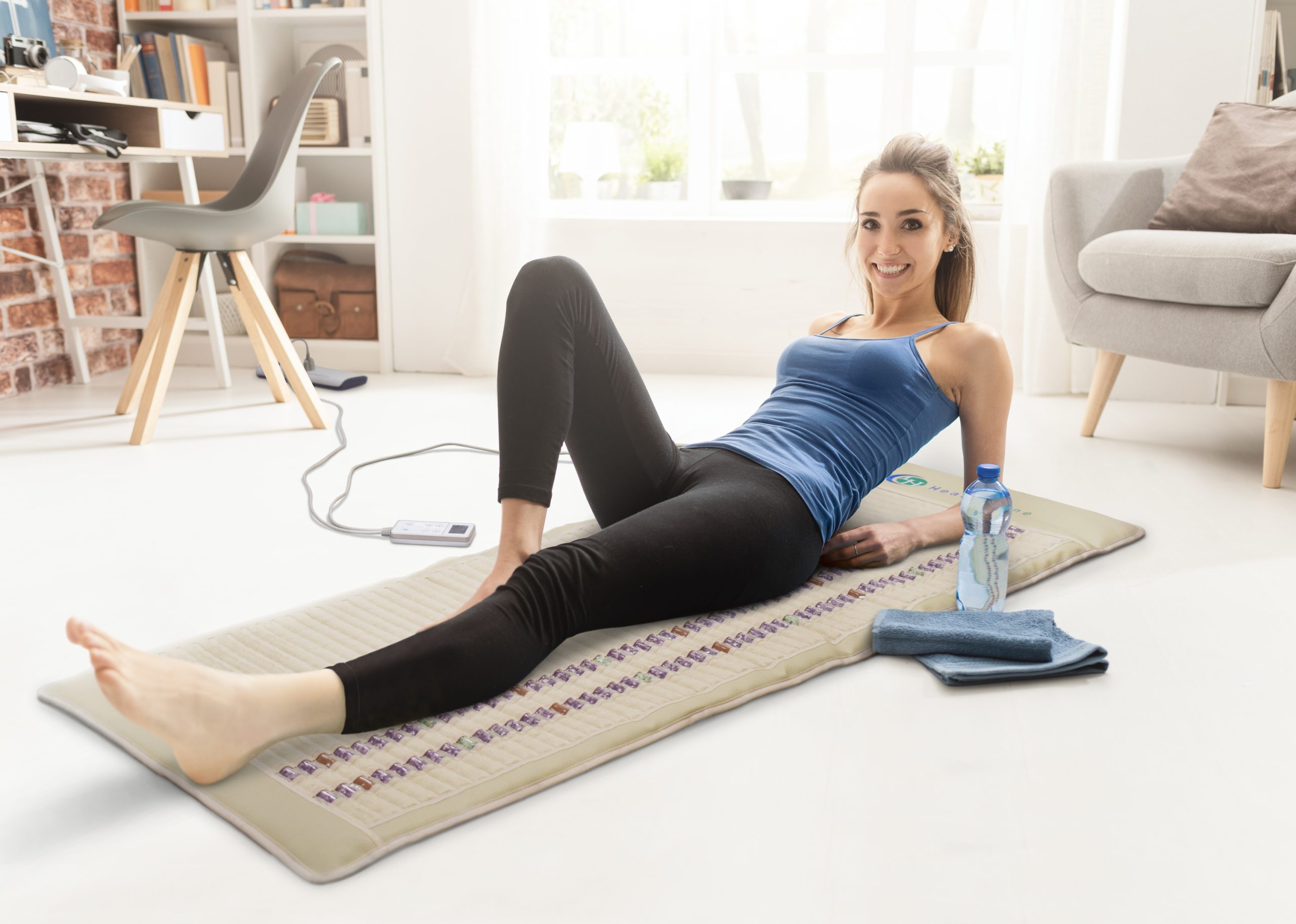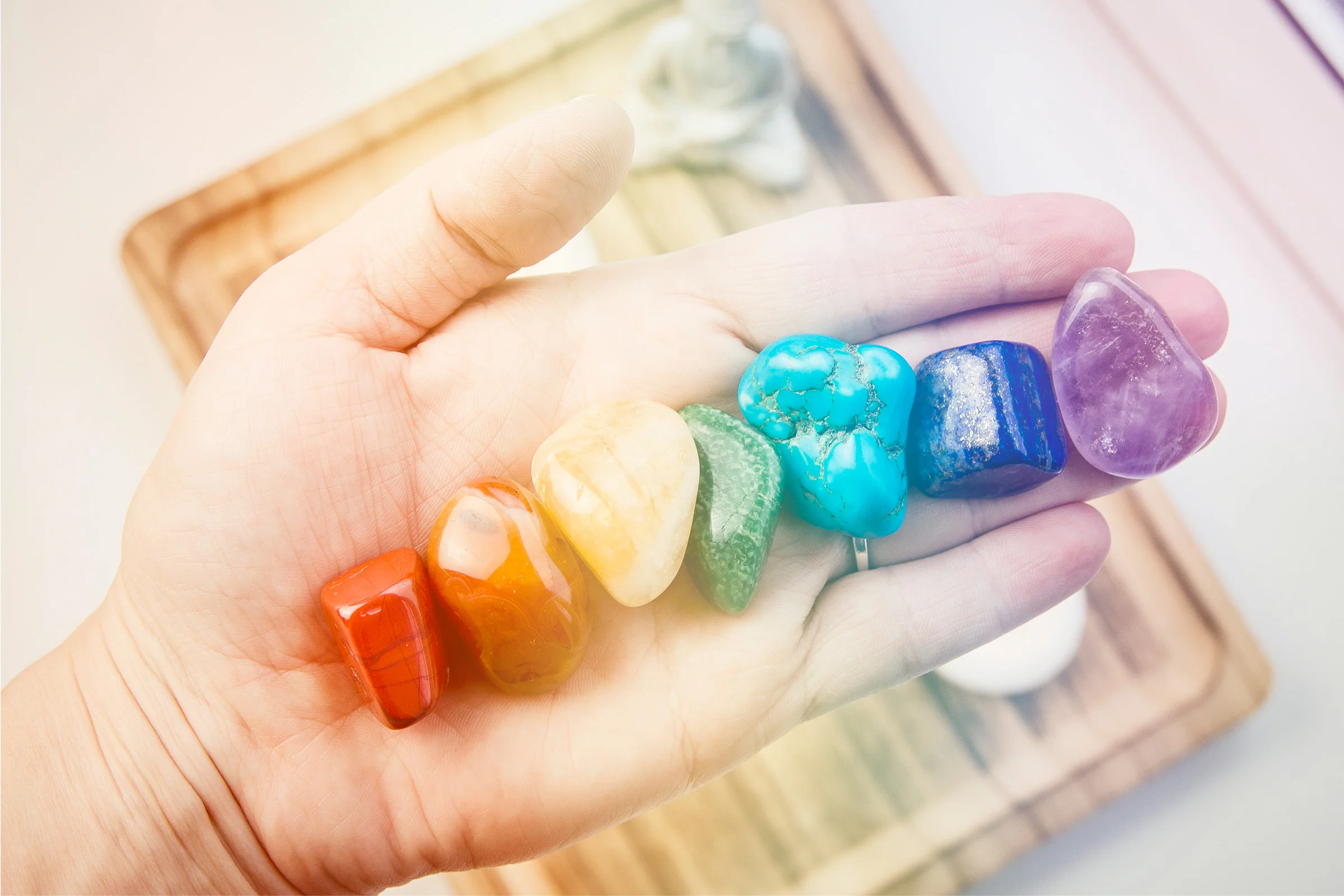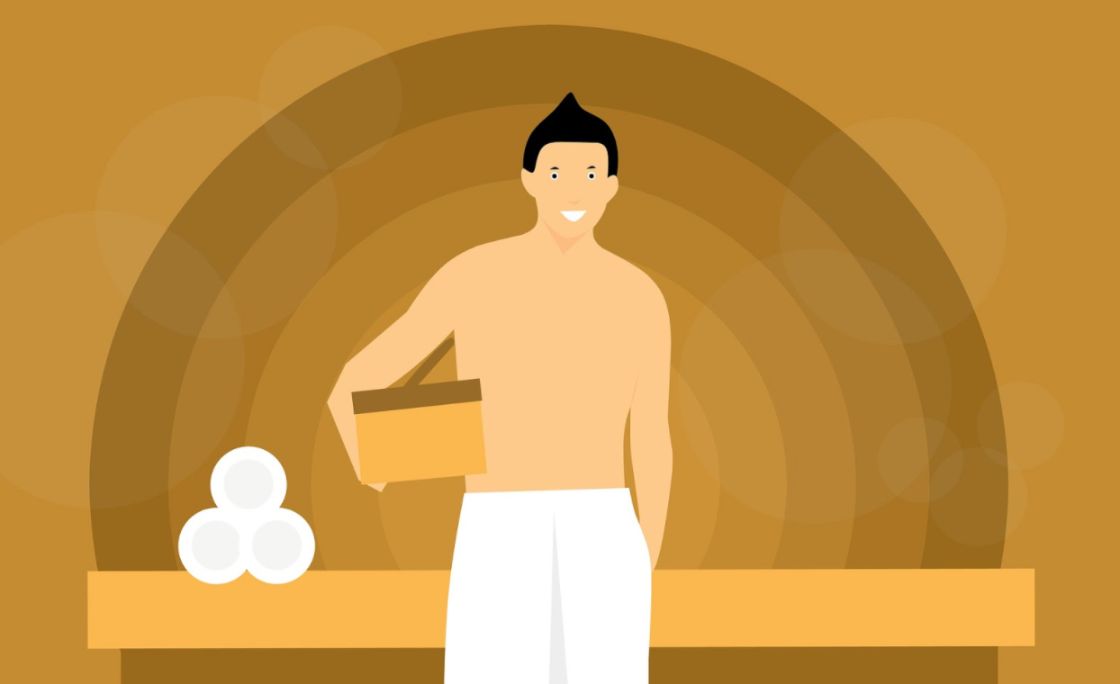A boil is a painful skin abscess that most people will suffer from at least once in their life.
The pain alone will spur you to find out how to get rid of boils fast.
Certain conditions can make you more prone to developing a boil on your skin.
Article Navigation
- What are Boils?
- How to Prevent Boils
- Potential Problems to which Boils Can Lead
- When to See a Doctor?
- Natural Remedies for Boils
- Dos and Don’ts of How to Get Rid of Boils
- There You Have It: How to Get Rid of Boils Fast
Sometimes a boil requires immediate professional medical care, but often a home remedy will be sufficient to lessen the symptoms and get it healed as quickly and safely as possible.
Do keep in mind that boils will progressively worsen if treatment is delayed or not performed properly; it’s vital for you to understand how to identify a boil, what caused it, and how to treat it quickly and effectively.
What are Boils?
When a hair follicle or an oil gland becomes infected with bacteria, it forms a blister-like pustule around and in the gland/follicle. The bacteria is most often Staphylococcus aureus. The surrounding tissue becomes inflamed and swollen as trapped pus collects in the infected area.
You’ll be able to see the bump on the skin, and it is usually 5-10mm in size, slightly raised from the skin, red, warm, sore to the touch, and has a visible head that’s usually yellow.
The bacteria can enter your skin a number of ways:
- The skin could be irritated from friction or other skin conditions, and develop microscopic breaks.
- Medication injections, such as insulin, make tiny breaks in the skin. Follicles and glands that are blocked beneath the surface can be more open on the surface, thereby providing an entry point for bacteria. The same is true of ingrown hairs.
- Bacteria can be spread by using another person’s cosmetic brushes and sponges, washcloths, and towels.
- Unsanitary living conditions and living in close quarters with numerous other people greatly increase your chances of bacteria being available to enter the skin through normal wear and tear, and activities of daily living like bathing.
- Boils can occur anywhere on your body, but they are most common in friction-affected areas – armpit, face, groin, buttocks, legs, and collar area.
How to Prevent Boils
There are some precautions that you can take to minimize your risk of developing a boil:
- Take showers instead of baths, and dry off completely afterward.
- Gently clean your skin daily, and after any event that leaves your skin oily or sweaty.
- Use an antibacterial soap like Safeguard.
- Gently exfoliate your skin every other day; be careful not to scrub too hard and break the skin. The goal is to remove dead skin cells, not healthy ones.
- Never share makeup, razors, undergarments, towels, or washcloths.
- Moderate the amount of fatty foods you eat, and eat a well-balanced diet rich in antioxidants.
- Wipe needle stick areas with alcohol before and after, and consider covering with a Band-Aid.
- Wear clothes that fit well – not too loose, nor too tight.
- Wear clean clothes every day.
- Sanitize your bathroom regularly. If multiple people share the same bathroom, sanitize before each use.
- Clean sheets regularly in hot water, and anytime they’re heavily soiled.
- Keep razors clean and sharp, and shave with the grain of the hair on well-lubricated skin.
- Wear protective covering(s) when dealing with harsh chemicals that break down the skin, such as degreaser.
- Avoid personal hygiene products that cause skin irritation for you specifically.
- Immediately provide first aid to irritations, cuts, and wounds.
Potential Problems to which Boils Can Lead
When you get a boil, it’s imperative that you treat it properly, because it may lead to a life-threatening medical condition. At the very least, you may be left with a lasting scar and a serious medical bill. The bacteria-filled pus is highly contagious, and can easily spread to form other boils or a collection of boils, called carbuncles.
Do not ever squeeze a boil. Do not ever try to pierce the boil with a needle or sharp object. The infection can spread into your bloodstream, which is called sepsis. Sepsis is a very serious, life-threatening medical condition.
When to See a Doctor
In most cases, a boil can safely and effectively be handled using a home remedy. However, there are certain cases where your doctor may need to drain the pus in a sterile environment, and/or prescribe you oral and topical antibiotics. You should seek immediate medical attention if the boil has red streaks coming away from it, a sign that you might have sepsis.
If you’re running a high fever, experience nausea or vomiting, have swollen lymph nodes, or experience severe pain or swelling, then you should seek immediate medical care. If home remedies don’t work after two weeks, or the boil spreads, then you should see your primary care physician for an antibiotic.
If you have an existing disease process that leaves you with an immunodeficiency, then you should proceed with caution and alert your primary care physician.
Natural Remedies for Boils
Wet Heat Compresses
The idea is routinely to apply wet heat to the area. The wetness helps to soften the head and allow the pus to drain naturally. The heat helps with pain and inflammation, and draws the pus to the surface of the skin for expulsion. Soak a clean washcloth or several gauze pads in clean, warm water.
The water should be heated, but not so hot that it’s uncomfortable to the touch. Apply the warm compress to the boil. You may have to reheat the compress occasionally to keep it warm. Leave it for on a total of 30 minutes.
Do this three to six times a day until the boil expels pus. Once draining, you’ll need to do standard first aid for this and any home remedy:
Clean the area with antibacterial soap, apply a small amount of antibacterial ointment if desired, and cover with a non-stick bandage twice a day until the wound develops a healthy scab.
Salt Soaks
If the boil is in an area that can be soaked in an isolated container, then do so.
Otherwise, thoroughly disinfect your tub with bleach before and after EACH soak to prevent the spread of infection.
- You’ll begin by making a tub or basin of salt water.
- For a tub, use 2 cups of Epsom salt.
- For a basin, use 1 cup of Epsom salt.
- Fill with warm water.
- Again, water should be only as hot as comfortable for your skin.
- Stir the water to disperse the salt.
- Soak the boil for 20 minutes.
- This can be done four times per day, until the boil expels pus.
- The boil should then be treated with basic first aid.
An alternative to the soak, which is particularly good for those in communal living situations, is an Epsom salt poultice.
- You’ll mix 2 tbsp. of Epsom salt with 1/2 tbsp. clean, hot water.
- This will create a thick paste.
- Gently pat the warm paste over the boil, making sure it’s completely covered.
- Do not rub it in.
- Leave it in place for 20 minutes, and then rinse.
- Pat dry.
- This may be done two to four times a day until the boil expels pus.
Onion
Onions, as much as they can make you cry, do have a lot of healing properties, including essentials oils, salts, and potassium. These can treat the infection and inflammation of a boil, and improve circulation. Onion also helps prevent boils from forming. Now, listen, this is a smelly proposition.
But it will be worth it.
- You’ll begin by slicing a thin cut of red onion and securing it over the boil.
- Plastic wrap works great for awkward areas.
- Just be sure not to tighten the plastic wrap so much that it obstructs circulation.
- Leave the onion slice on the boil for 2-4 hours, or even overnight, if possible.
- You may repeat this process up to four times a day with a fresh onion slice each time.
If the boil is on an area, such as the buttocks, for which it is not so feasible to sit or lie on an onion most of the day or night, you can try an onion water compress.
- You’ll slice half an onion and place it in 4 oz. of water.
- Gently boil this until it becomes slightly gummy – about 30 minutes.
- Don’t boil it on too high a temperature as this can destroy the healing properties of the onion.
- Once the water is gummy and has cooled to a warm temperature, apply it to a washcloth or gauze pad, and apply the compress to the boil.
Apple Cider Vinegar
Vinegar has been used to fight infections since Hippocrates, the father of modern medicine, recommended it to clean ulcerations and skin sores back in 400 BC. It has natural anti-inflammatory and antiseptic properties. If you have sensitive skin you’ll need to dilute the acid in the apple cider vinegar so that it isn’t so strong. This can be done by adding 2 tbsp. of vinegar to every 1 tbsp. of clean, hot water. Make enough that you can thoroughly soak a gauze pad or small washcloth.
Soak the gauze and apply to the boil for five minutes. If no irritation occurs, then continue to apply the vinegar to the wound 4-5 times per day. Do not wash the vinegar off. Schedule showers at least 2 hours after the vinegar applications so that the vinegar has time to do its work on the wound.
After a few days, the boil should expel the pus, and basic first aid bandaging can be started.
Garlic Poultice
The allicin and ajoene sulfur compounds found in garlic can quickly help a boil to heal. Long known to have anti-inflammatory and antimicrobial properties, garlic has even been found to kill MRSA, which is a staph infection resistant to most antibiotics.
- You’ll start by finely mincing some fresh garlic cloves.
- Add 2 tbsp. of olive oil or honey.
- Use the flat edge of a chopping knife to make a paste.
- Apply a liberal layer of garlic poultice directly to the boil.
- Don’t rub.
- Cover the area.
- Again, plastic wrap works well for awkward areas.
- Secure, and leave in place for 2-4 hours.
You can repeat this process 3-4 times per day until the boil expels its pus. Then begin basic first aid to the boil. You can simultaneously hit the boil nutritionally by increasing your dietary intake of fresh garlic.
Tea Tree Oil
Tea tree oil is a fantastic antibacterial and antimicrobial agent. You’ve probably seen it as a main ingredient in many ‘acne’ soaps, and soaps formulated for psoriasis.
Since it has anti-fungal properties, too, it’s also a common ingredient in products for athlete’s foot and ringworm. It’s even the main ingredient in most skin tag removal products.
To treat boils at home, you can begin by gently washing the boil with tea tree soap.
- Pat dry.
- Apply a few drops of pure tea tree oil to a gauze pad.
- Apply this to the wound, and secure in place with tape, or wrap for 30 minutes to an hour.
- Repeat this process 2-4 times per day.
One word of caution is that tea tree oil can dry out the skin around the boil.
If this happens, back off on usage to just once per day of one source of tea tree oil.
Neem
Neem is a tree, and its flowers, roots, bark, twigs, and leaves are used to make oils and oral supplements. It’s another ingredient that you’ve probably already seen in many common products, from insecticides and head lice treatments, to cough medications and anti-itch shampoos and soaps.
It has antiseptic, anti-fungal, anti-inflammatory, and anti-itch properties that can help you treat your boil. It’s also is a natural immunity booster, so much so that you should not take neem by mouth without consulting your physician if you have an autoimmune disease like MS or rheumatoid arthritis.
Children and pregnant women should also consult their physician before using neem, as it has been known to have counterindications for these groups.
You may take a neem supplement by mouth from the vitamin section to provide an extra immunity boost.
- You can either grind neem leaves with water or oil to make a paste, or you can buy neem oil.
- You’ll now gently wash the boil area with neem soap.
- Pat dry.
- Apply the neem paste or neem oil directly to the boil.
- Cover with a bandage.
- Repeat this process up to four times per day, until the boil expels pus.
Turmeric
You’ve probably seen turmeric in the spices at your local grocery store. It’s a plant member of the ginger family. Beyond Asian and Indian cooking, turmeric has potent antihistamine, antioxidant, anti-inflammatory, and analgesic properties that are used for a variety of skin and intestinal issues.
It’s particularly great for boils, because it enhances circulation, collagen synthesis, and the skin markers necessary for wound healing. An oral supplement of 0.5 – 6 grams a day is safe and effective. You can find this in the vitamin and supplement aisle. Alternatively, you may wish to increase your turmeric powder intake by either sprinkling it on foods, or by making a cocktail of milk mixed with one teaspoon of turmeric.
Note that when liberally sprinkling foods turmeric may be bitter to the taste.
- For topical application, you’ll want to mix 2 tbsp. turmeric powder with 1 tbsp. of warm water to create a thick paste.
- Gently wash the boil with antibacterial soap and clean water.
- Pat dry.
- Gently apply the warm turmeric poultice to the boil area, and cover with gauze or plastic wrap.
- Rinse the area after 30 minutes.
- Repeat 3-4 times per day until the pus is expelled.
Echinacea
You’ve heard that the O-positive blood type is the universal blood donor? Well, Echinacea is the universal antibacterial, antiviral herb. Pick up a bag of cough drops, over-the-counter cold medicine, or herbal tea for a cold, and you’re likely to see Echinacea as a primary ingredient.
Echinacea, also called purple flower, is a Native American plant. It’s particularly effective against staph germs, and is being studied for effectiveness against MRSA strains of staph that are resistant to most oral prescription antibiotics.
It also gives immune cells a boost in attacking bacteria and abnormal cells. And it has tremendous anti-inflammatory properties to help with the pain and swelling of your boil.
It’s a powerhouse treatment for boils. It’s available in supplement, extract, powder, and tea form for oral use.
One method isn’t particularly better than the other. It’s really a matter of taste.
However, you shouldn’t use Echinacea products longer than six weeks at a time, nor for everyday usage, because the body can adapt to its presence and you’ll lose the immunity boost it provides during times of need.
Topical use actually follows the same process as making tea that you’d drink orally.
- Mix a teaspoon of Echinacea with a cup of hot water, allowing it to steep for about 10 minutes.
- For topical use, you’ll soak a gauze pad in the warm Echinacea and apply to the boil for 30 minutes.
- Remember that the liquid should not be so hot as to be uncomfortable and burn your skin.
- You may repeat the process twice a day until the boil expels its pus.
Echinacea can an allergen, especially to those with known ragweed and flower allergies. If your skin is irritated or redder after the application, then you’ll need to discontinue use and consult your primary care physician.
It should also not be used by those with autoimmune disorders.
Bread, Milk, and Salt
Sprinkle in some cinnamon and egg and you’ll have French toast, right? Sorry, this isn’t breakfast. Milk has long been used as a soother for skin. You’ve probably seen expensive soaps made of milk. It has properties to relieve itching and draw out impurities from the skin.
The salt, as discussed earlier, helps with inflammation and assists in expelling the pus from the boil.
- You’ll bring a cup of milk and 2 tbsp. of salt to a boil.
- Begin adding bread crumbs (usually one to two pieces of white bread) until you have a thick, gummy paste.
- Apply the warm paste to the boil and leave for 30 minutes.
- Wash off and pat dry afterwards, and avoid showering for several hours.
- Repeat the process 3-4 times per day.
Of note, you may also add turmeric, honey, Echinacea, or garlic safely, and give the milk mix an extra immunity kick.
Black Cumin Seeds
Black cumin is derived from the Nigella sativa plant. It’s a spice commonly seen in Asian and Middle Eastern cooking. However, the seeds are also rich in antioxidants, and anti-inflammatory and antibacterial properties.
They’ve long been used in a variety of skin treatments, including for burns. In fact, one of the earliest references to the medicinal power of black cumin is found in the Old Testament, where Muhammad calls it a remedy for every illness other than death. W
ith boils, black cumin gives the body a natural immunity boost to help fight the infection. Black cumin seeds can be added to foods. They can also be steeped in hot or cold tea.
Topically, you’ll gently wash the area with antibacterial soap and pat dry.
- Apply several drops of black cumin seed oil to a gauze pad.
- Secure for 30 minutes to allow the oil to soak into the boil.
- Avoid showers for several hours afterward.
Japanese Honeysuckle
The flowers, stems, and leaves of the Japanese honeysuckle (Lonicera japonica) have antiviral, antioxidant, and antibiotic properties that make it a favorite in Eastern medical treatments, including those for fever, skin sores, and inflammation.
For oral consumption, it’s best to place the honeysuckle stems in a pitcher of water and let them infuse overnight at room temperature. You can drink this tea cold the next day.
Reserve a portion for a topical soak.
- Heat some of the honeysuckle water.
- Wash the boil with antibacterial soap and water and pat dry.
- Saturate a gauze pad in the honeysuckle water.
- Apply the warm pad to the boil for 30 minutes to an hour.
- Gently rinse off and pat dry.
- Repeat several times a day until the boil expels pus.
Eucalyptus Oil
Eucalyptus oil has a soothing effect that is used to treat a variety of conditions from asthma and muscle fatigue to boils. Yes, it’s a very versatile herb.
With boils, it helps to reduce the irritation, inflammation, itching, and pain.
It’s also an antiseptic that will help combat the infection.
- Wash and pat dry the boil.
- Apply a few drops of eucalyptus oil to a gauze pad.
- Secure for 30 minutes.
- Rinse and pat dry skin.
- You may repeat twice a day.
- If skin irritation occurs, discontinue use and contact your primary care physician.
- While soothing, eucalyptus is fragrant and pungent, which can affect sensitive skin adversely.
A poultice may also be made by mixing a couple drops of eucalyptus oil with 25 grams of slippery elm. Add just enough water to make a pliable paste. Apply the paste to clean and dry skin for an hour once daily.
After removal rinse and pat dry.
Castor Oil
Castor oil is extracted from the seeds of the Ricinus communis, or castor plant. It has long been a staple in Indian medicine to treat a variety of disorders and diseases that cause inflammation, such as rheumatoid arthritis, because the ricinoleic acid is a powerful anti-inflammatory agent.
It’s also a potent anti-fungal, anti-viral, and anti-bacterial. With home remedy of boils, it’s been known to draw completely the pus from the core of the boil within just two days.
It’s particularly beneficial for deeper boils that refuse to come to a head but have a hard raised nodule on top of the skin.
- Begin by washing the boil with antibacterial soap and pat dry.
- Place several drops of the oil on a gauze pad and secure in place over the boil.
- Leave in place until you shower.
- Yes, it’s safe to leave castor oil on the skin overnight, if that makes it easier.
- Repeat the process until the boil comes to a head and expels the pus.
Burdock Root
Arctium lapa, or burdock root, may be more difficult to find than some of the other home remedy treatment options simply because it’s not as well-known. However, it’s becoming a more and more popular ingredient in many acne medications.
As an antioxidant, burdock flushes out the toxins from your body. It also has anti-inflammatory and antibiotic properties that make it perfect for boil treatment. You’ll follow the same process as with the Echinacea. Steep the herbal burdock root tea.
Drink part of it and reserve part of it for a topical soak. Burdock has a strong diuretic effect, meaning you’ll need to be cautious if you take a prescription diuretic, have kidney disease, or have fluid intake and output restrictions.
Some pharmacies and herbal medicinal stores may carry the oil extract, which can be used topically by applying a few drops on a gauze pad and securing over the boil for 30 minutes. Rinse the area and repeat 3-4 times per day.
If you can find the fresh burdock root, you’ll need to clean it with warm water or by scraping away the outer layer with a knife. Place the root in 8 ounces of water and bring to a boil. Reduce heat to low and let the root simmer for an hour. Strain the fresh tea and use half for a topical soak and half for your drink.
Potato
Sorry to disappoint, but we still aren’t eating. Potatoes are high in Vitamin C, iron, calcium, phosphorus, Vitamin B-complex, tannins, alkaloids and other skin-friendly nutrients that provide anti-inflammatory, antioxidant, and antiseptic properties.
You’ll clean the boil with antibacterial soap and water and pat dry. Cut a thin slice of potato and apply over the boil overnight.
As you sleep, the potato will help to draw out the pus. If the area is in an awkward location, then you may alternatively grate a raw potato to acquire the nutrient-rich juices inside. Soak a gauze pad in the juices and apply to the boil. Leave in place for 30 minutes to an hour.
Repeat the process with fresh potato juice several times each day.
Dos and Don’ts of How to Get Rid of Boils
- Don’t squeeze or attempt to pop or lance a boil at home. The infection can spread to create more boils, or even result in life-threatening sepsis.
- Don’t continue any treatment that is causing more irritation, redness, or inflammation, as this could be a sign that you are allergic to a particular substance.
- Do wash your hands with antibacterial soap before touching the boil and/or initiating any of the remedies for how to get rid of a boil.
- Do feel free to use warm water soaks and compresses several times a day, in addition to any home remedy. The additional heat and limited application of moisture will help to soften the boil for the pus to evacuate, and will alleviate pain and swelling.
There You Have It: How to Get Rid of Boils Fast
All of these are effective home remedies for boils. They can help save you from the expense and inconvenience of doctor appointments and prescription medications, when done with diligence and care. Keep in mind that the infection within a boil is highly contagious and can easily spread to other areas of the skin and other people while the boil is draining pus.
During this time, you’ll always want to practice basic first aid – clean and bandage the draining wound, and change any soaked bandages immediately. Most boils, especially with the methodical application of home remedies, will subside in less than two weeks.
Of course, if the boil worsens or doesn’t improve, you’ll need either to switch home treatments, or seek counsel from your primary care physician. In the future, remember that skin boils can be prevented, in particular with careful attention to hygiene habits, proper skin care, and good nutrition.










